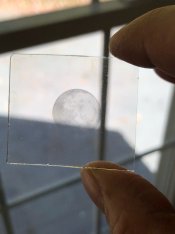A powerful way is making an internegative, we make a contact copy on low ISO copy film, color separation film, microfilm CMS 20 or regular ISO 25 film, copied emulsion to emulsion in contact, so we get a positive, and from that positive we make another contact copy to get again a negative.
In the developments of the two contact copies we develop to increase contrast as needed to get excatly the contrast what we want. If we have a densitometer and the calibration of the copy film ((https://www.flickr.com/photos/53687643@N04/45541983072)) we may adjust exposure/processing to nail the densities we want in the new negative. If going this way without instruments and graphs we have to make several tests: we increase exposure for the contact copy until thin areas have all detail and then we increase development time until the dense areas are in the spot we want.
As the copy film will outresolve the taking film then no quality should be lost, and we don't risk the original negative, when the negative is important then this matters.
Another choice is HiRes scanning, editing and using a digital film recorder to obtain film again: https://www.firstcall-photographic.co.uk/transfer-36-digital-images-back-to-35mm-film/p7124
In the developments of the two contact copies we develop to increase contrast as needed to get excatly the contrast what we want. If we have a densitometer and the calibration of the copy film ((https://www.flickr.com/photos/53687643@N04/45541983072)) we may adjust exposure/processing to nail the densities we want in the new negative. If going this way without instruments and graphs we have to make several tests: we increase exposure for the contact copy until thin areas have all detail and then we increase development time until the dense areas are in the spot we want.
As the copy film will outresolve the taking film then no quality should be lost, and we don't risk the original negative, when the negative is important then this matters.
Another choice is HiRes scanning, editing and using a digital film recorder to obtain film again: https://www.firstcall-photographic.co.uk/transfer-36-digital-images-back-to-35mm-film/p7124




 .
. Maybe
Maybe 